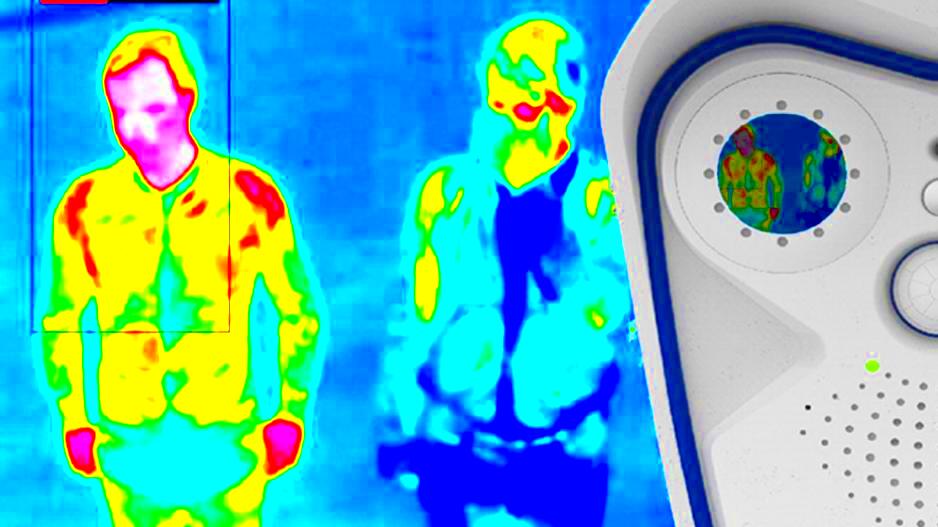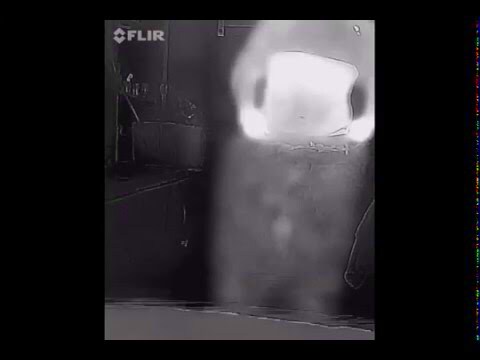Thermal imaging technology allows us to see heat. Unlike regular cameras that capture visible light, thermal cameras detect infrared radiation, which is emitted by all objects based on their temperature. This radiation is then translated into images that represent different temperatures in various colors. The hotter an object is, the more infrared radiation it emits, making it visible in thermal images. It's a powerful tool used in various fields, from security to medical diagnostics.
How Thermal Imaging Works in Practice

Thermal imaging relies on infrared sensors to detect temperature differences in the environment. Here's how the process works:
- Detection: The infrared sensor captures the infrared radiation emitted by objects and surfaces.
- Conversion: The radiation is converted into electrical signals, which are then processed into a visual image.
- Display: The processed data is displayed on the screen as a thermal image, where different colors represent different temperatures. For example, red or white may indicate hot areas, while blue or purple represent cooler areas.
Thermal cameras are calibrated to detect subtle temperature changes, allowing them to reveal details not visible to the naked eye, even in complete darkness or through smoke. These capabilities make thermal imaging a valuable tool for a range of industries.
Common Applications of Thermal Imaging Technology

Thermal imaging is used in a wide range of industries, offering unique advantages over traditional visual cameras. Some of the most common applications include:
- Security and Surveillance: Thermal cameras help detect intruders in the dark or through obstructions like smoke or fog.
- Building Inspections: These cameras can find heat leaks, electrical issues, or water damage in walls, roofs, and floors.
- Firefighting: Firefighters use thermal cameras to locate hotspots, navigate smoke-filled areas, and ensure fire safety.
- Medical Diagnostics: Thermal imaging helps identify areas of inflammation, poor blood circulation, and other medical conditions.
- Military and Law Enforcement: Thermal imaging is crucial for surveillance, navigation, and target identification in challenging environments.
- Electrical and Mechanical Inspections: Identifying overheating electrical components or mechanical parts can prevent breakdowns and improve safety.
As the technology advances, more industries are finding new ways to integrate thermal imaging into their operations for enhanced safety, efficiency, and performance.
Understanding the Challenges of Defeating Thermal Imaging
Defeating or masking thermal imaging is no easy task. The technology works by detecting infrared radiation, which all objects emit based on their temperature. Since thermal imaging sees heat, trying to hide from it involves managing your heat signature, which can be tricky. Even small variations in temperature can reveal your presence, making it difficult to remain undetected. There are several challenges to keep in mind:
- Temperature Differences: Even in a cold environment, the human body emits heat, which thermal imaging can easily pick up.
- Environment Interference: External factors like wind, weather, and nearby heat sources can make it harder to effectively mask your heat signature.
- Advanced Detection Systems: Modern thermal imaging systems are incredibly sensitive, able to pick up even minor temperature changes, making evasion difficult.
- Adaptive Technology: As thermal imaging evolves, countermeasures must constantly adapt, which can be a daunting and costly task.
These challenges make it clear that simply masking your heat signature isn't always enough. A combination of methods and strategies may be necessary to reduce your visibility to thermal sensors.
Methods to Prevent or Mask Thermal Signatures
There are various strategies people use to hide from thermal imaging systems, though none are foolproof. Here are some of the most common methods used:
- Insulating Materials: Special fabrics and materials can be worn or used to block or deflect heat, preventing thermal radiation from escaping and revealing your body heat.
- Thermal Blankets: Reflective thermal blankets can help shield you from thermal detection by bouncing infrared radiation away from your body.
- Heat Masking: This technique involves surrounding yourself with objects or substances that match your body temperature, effectively camouflaging your heat signature.
- Environmental Manipulation: Using environmental factors, such as walking through colder areas or staying near heat sources (like fires), can help you blend in with your surroundings.
- Cooling Systems: Wearing cooling systems or using chemical cooling agents can lower your body temperature temporarily, making you less visible to thermal sensors.
Although these methods can help, they require careful planning and often have limitations. Even with the best precautions, perfect invisibility to thermal cameras remains elusive.
Legal and Ethical Considerations in Using Thermal Imaging Technology
While thermal imaging is a powerful tool, its use raises significant legal and ethical questions. In many places, there are laws regulating how and where thermal cameras can be used, especially in public spaces or private property. Some key considerations include:
- Privacy Concerns: Thermal imaging can detect people through walls, windows, or even in complete darkness. This raises questions about the invasion of privacy and whether it's acceptable to use this technology without consent.
- Surveillance Laws: Many countries have strict surveillance laws that govern the use of technologies like thermal cameras, especially in public areas. Violating these laws can result in hefty fines or criminal charges.
- Use in Military and Law Enforcement: While thermal imaging is a valuable tool for law enforcement and military operations, its use must align with human rights laws and ethical guidelines, ensuring it is not misused for mass surveillance or profiling.
- Environmental Impact: In some situations, the use of thermal imaging can disrupt natural habitats or violate environmental regulations, such as when using drones for wildlife surveillance.
- Liability Issues: Improper use of thermal cameras could lead to false detections, misidentification, or wrongful actions, especially in security or medical settings. This creates legal challenges in determining responsibility when mistakes happen.
As the technology becomes more accessible, these concerns will continue to grow. It's crucial for users to understand and respect the boundaries of thermal imaging, balancing its benefits with responsible, ethical use.
Frequently Asked Questions
Thermal imaging technology raises many questions, especially when it comes to its use and the methods of evading it. Here are some of the most common inquiries about thermal imaging:
- What is thermal imaging?
Thermal imaging is a technology that detects infrared radiation, or heat, emitted by objects. It converts this radiation into an image that highlights temperature differences in the environment. - How can I hide from thermal imaging?
Some methods for masking thermal signatures include using insulating materials, wearing thermal blankets, or utilizing environmental features to blend in with your surroundings. However, these methods are not always foolproof, as advanced thermal systems are highly sensitive. - Can thermal imaging detect people in the dark?
Yes, thermal imaging is particularly useful in the dark. Unlike regular cameras that need visible light, thermal cameras detect heat, allowing them to identify people or animals even when there is no light. - Is it possible to completely avoid detection by thermal cameras?
Completely avoiding detection is challenging. While techniques like cooling your body temperature or using thermal-blocking materials can help, thermal imaging systems are highly advanced and can often detect even minor temperature variations. - Are there any legal restrictions on using thermal imaging?
The use of thermal imaging is regulated in many countries. In some places, it is illegal to use thermal cameras without permission, especially in private spaces or for surveillance purposes. Always check local laws before using such technology.
Conclusion: Key Takeaways on Defeating Thermal Imaging
Defeating thermal imaging is complex and requires understanding both the technology and the challenges involved. While methods like masking your heat signature or using cooling techniques can reduce your visibility, there is no guaranteed way to remain undetected. Moreover, legal and ethical considerations must guide the use of thermal imaging to ensure it’s applied responsibly and within the law. As technology evolves, staying informed and prepared is key to understanding how to manage and protect against thermal detection.

 admin
admin








